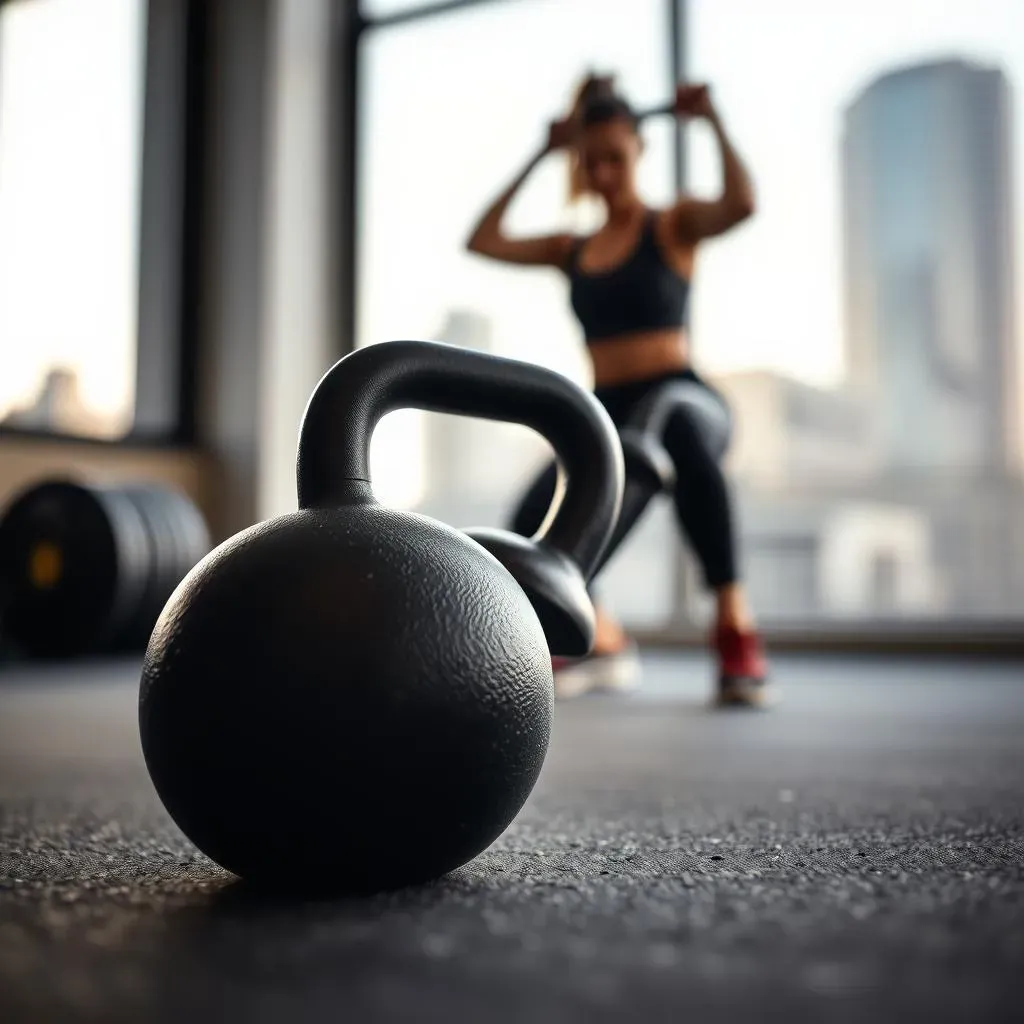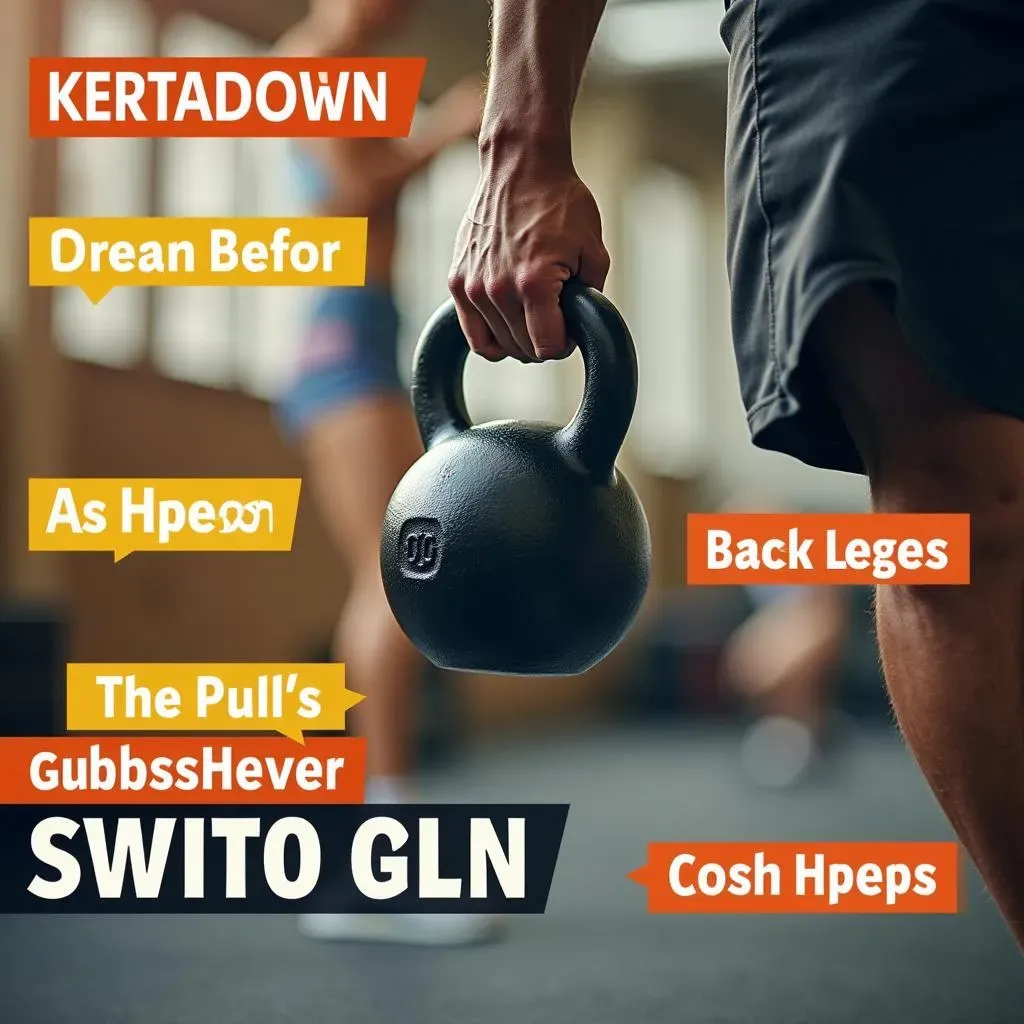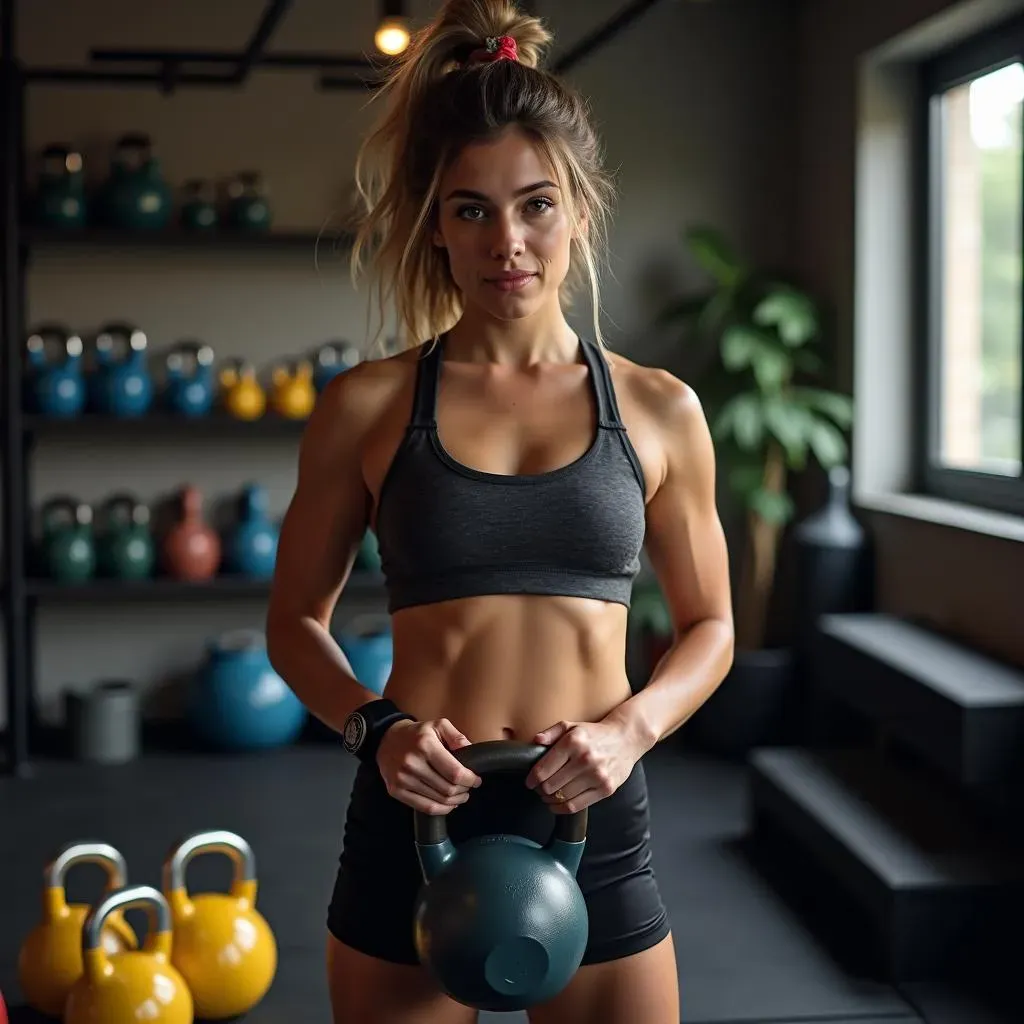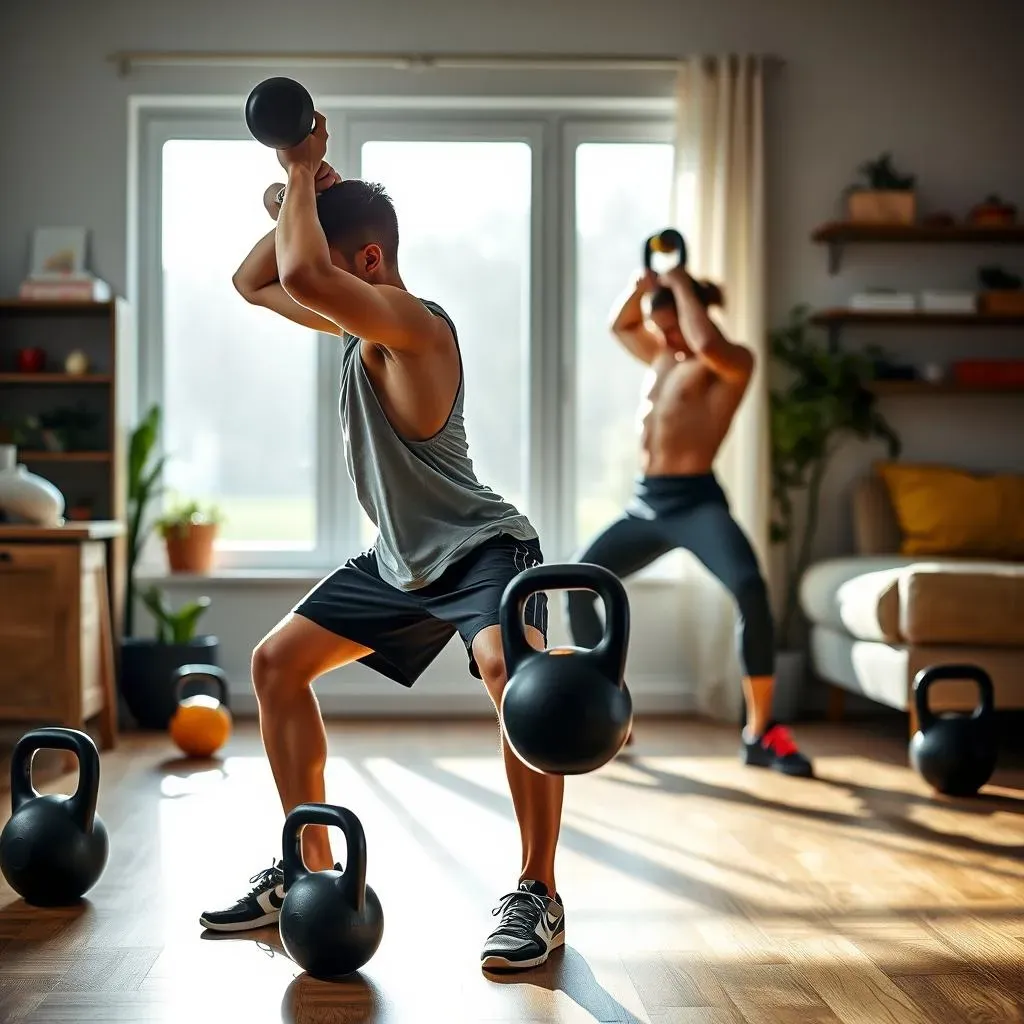Table of Contents
Tired of the same old leg day routine? Want to build powerful legs without leaving your house? Then you've come to the right place! We’re diving into the world of leg workouts at home with kettlebells. These aren't your grandma's dumbbells; kettlebells bring a whole new level of challenge and fun to your training. They’re fantastic for building strength, improving cardio, and even boosting your functional fitness, which is just a fancy way of saying they help you move better in everyday life. This article will walk you through the basics of kettlebell training, highlighting why they're so great for your legs. We will then explore 12 awesome exercises you can do at home, from swings to squats, and wrap up with a simple plan to get you started. Get ready to transform your leg day, and maybe even have a little fun doing it!
Kettlebell Training Basics for Leg Workouts

Kettlebell Training Basics for Leg Workouts
Why Kettlebells Rock for Legs
Okay, so you're thinking about kettlebells for leg day, right? Good choice! These cannonball-with-a-handle things aren't just for show, they're seriously effective. Unlike dumbbells, where the weight is evenly distributed, kettlebells have their weight hanging off-center. This forces your muscles, especially your core, to work harder to stabilize you during movements. This means more muscle activation and a better workout. Plus, the dynamic nature of kettlebell exercises like swings and snatches really boosts your heart rate, making it a killer cardio and strength combo.
Think of it this way: if dumbbells are like driving a car on a smooth highway, kettlebells are like off-roading. You need to engage more muscles to stay on track, and that's what builds a strong, functional lower body. It's about more than just lifting weight; it's about control, balance, and power—all things that kettlebells help you develop. They also add a fun twist to your workout routine, making it less of a chore and more of a challenge you look forward to.
Form is King (and Queen!)
Before you start swinging kettlebells around like a madman, let's talk form. It’s not just about lifting the weight, it’s about lifting it *correctly*. Bad form is a one-way ticket to injury-ville, and nobody wants that. So, what’s the deal with good form? It’s about keeping your back straight, engaging your core, and using your legs to power the movement. Think of your body as a well-oiled machine: each part needs to work together smoothly and efficiently.
For example, when you're doing a squat, you're not just bending your knees, you're pushing your hips back like you're sitting on a chair, keeping your chest up, and your core tight. If you're not sure about your form, record yourself doing the exercises. Watching yourself can be surprisingly helpful. And don't be shy about asking a friend or even a trainer to take a peek and give you some feedback. It's better to start slow and do it right than to rush and get hurt. Trust me, your body will thank you for it.
Form Focus | Key Points |
|---|---|
Back | Keep it straight, not rounded or arched. |
Core | Engage it like you're bracing for a punch. |
Legs | Power the movement, don't rely on your back. |
Hips | Push them back on squats and deadlifts. |
Getting Started Safely
Alright, you're ready to grab a kettlebell, but where do you start? First, pick the right weight. Don't go too heavy at first, even if your ego tells you otherwise. A good rule of thumb is to choose a weight that allows you to perform all the reps with good form. If you’re struggling to maintain your form, it's time to drop down to a lighter weight. Remember, it’s a marathon, not a sprint. You're building a foundation of strength and technique, and that takes time.
Start with the basics, and master them. Things like the kettlebell swing, the goblet squat, and the deadlift are great places to start. There are plenty of online resources that can show you the proper form for these exercises. Don’t hesitate to watch a few videos and practice in front of a mirror. The key is to be patient, consistent, and to always prioritize safety. And most importantly, have fun with it. Kettlebell training is a journey, and every step you take gets you closer to a stronger, healthier you.
12 MustTry Kettlebell Leg Exercises At Home

12 MustTry Kettlebell Leg Exercises At Home
Kettlebell Swings: The King of All Exercises
Alright, let's get into the good stuff – the exercises! First up, we've got the kettlebell swing, and let me tell you, if there's a king of kettlebell exercises, this is it. It's not just a leg exercise, it's a full-body power move that works your glutes, hamstrings, core, and even your shoulders. Picture this: you're standing with your feet shoulder-width apart, kettlebell a little in front of you, and you're about to hinge at the hips, not the waist! Think of it like you're hiking the ball to your friend, not bending over to pick something up from the ground. The power comes from your hips, not your arms. Keep your back straight, core tight, and swing that kettlebell up to about chest height, squeezing your glutes at the top. It's a ballistic movement, so it should be fast and powerful.
Now, the swing might look simple, but it’s all about the details. Don't let the kettlebell pull you forward; you're in control, not the weight. Imagine you're trying to zip up a jacket with your hips, that's the kind of explosive power we're going for. Start with a lighter weight to nail the form, and then, as you get more comfortable, you can gradually increase the weight. Remember, it's not about how high you swing the kettlebell, but how well you can control the movement. This is a game-changer for your posterior chain, and it's a great way to fire up your metabolism, too. So, get swinging, and feel the burn!
Goblet Squats: Your New Best Friend
Next on our list is the goblet squat, a fantastic exercise for building those quads and glutes. This one is all about control and depth. Hold the kettlebell close to your chest, like you're hugging it, hence the "goblet" name. Stand with your feet shoulder-width apart, and then squat down, pushing your hips back like you’re sitting on a chair. Keep your chest up, your back straight, and your core engaged. The kettlebell acts as a counterbalance, helping you maintain good posture and sink deeper into the squat.
The goblet squat is a great way to learn proper squat form because the kettlebell forces you to stay upright and engage your core. If you're struggling with bodyweight squats, adding the kettlebell can actually make it easier by providing that counterbalance. Think of it as a friendly guide helping you find the right position. Aim for a full range of motion, getting your thighs parallel to the floor, or as low as you can go comfortably. Don't let your knees cave in; keep them aligned with your toes. This exercise not only builds strength but also improves your mobility and balance. It's a staple for any leg day, and it’s something you can easily do at home with minimal space.
Exercise | Muscle Groups Targeted | Key Focus |
|---|---|---|
Kettlebell Swings | Glutes, Hamstrings, Core | Hinge at the hips, power from the hips |
Goblet Squats | Quads, Glutes, Core | Control, depth, upright posture |
Putting It All Together: Your Kettlebell Leg Workout Plan

Putting It All Together: Your Kettlebell Leg Workout Plan
Okay, so you've learned some awesome kettlebell moves, now how do you actually put them together into a workout? First off, remember that consistency is key. It's better to do a few short workouts each week than one marathon session every now and then. Start with 2-3 times a week, and as you get stronger, you can increase the frequency. For a good leg day, aim to include a mix of exercises that work different muscle groups. Think squats, swings, lunges, and maybe some deadlifts. Begin with a 5-10 minute warm-up, like light cardio and some dynamic stretching, to get your muscles ready. Then, dive into your main workout, do 3 sets of 8-12 reps for each exercise, focusing on good form. After the workout, cool down with some static stretching, holding each stretch for about 30 seconds. This helps improve flexibility and reduces soreness.
Don't be afraid to mix things up and listen to your body. If you’re feeling sore, take a rest day. If you’re feeling good, maybe add an extra set or try a slightly heavier kettlebell. The key is to make it sustainable and enjoyable. You're not just building muscle, you're building a habit. And the best habit is one you stick with. So, grab that kettlebell, find a little space at home, and get ready to feel the burn. Here is a sample plan:
Workout Component | Details |
|---|---|
Warm-up | 5-10 minutes of light cardio and dynamic stretching |
Main Workout | 3 sets of 8-12 reps for each exercise |
Cool-down | 5-10 minutes of static stretching |
